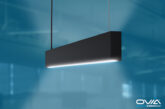
There’s a simple trick that can solve some of the most common LED problems, but most electricians don’t know about it until they talk to Zano Controls. They’re going to let you in on a secret…
What’s the biggest reason that LED dimmers don’t quite work as they should? If you’re experiencing problems with low level flicker, drop out, or poor-quality light output on a Zano LED dimmer, it is often avoidable – and the fix is simple.
It’s not a product fault. It’s not a driver issue. It’s a crucial step that is being missed during installation. Once you know what it is, it will transform your LED installations from here on in.
The answer is programming: specifically, using Zano’s Smart Settings feature.
What are Smart Settings?
All Zano’s dimmers are equipped with Smart Settings, a feature that allows you to program your dimmer to the optimal settings for your install. These presets, when configured correctly, eradicate many of the annoyances that you might have experienced on previous LED dimming projects.
These Smart Settings include:
Minimum level preset: this sets your rotary controller’s lowest level. Instead of dropping out when the user dims below a certain point, the lamps will switch off neatly when they reach their programmed minimum level. No dead travel on the rotary control, no flickering lights spoiling the mood.
Start level preset: exclusive to Zano dimmers, this function enables lamps to turn on at the level they were last dimmed to. A boost function built into the dimmer will kickstart the lamps to reach their previous brightness.
You will find these settings in every Zano dimmer, from the ZMO150 to the ZBARLED1000 and everything in between.
Why do I need to program a dimmer?
Every LED dimming installation is different and will have a slightly different ‘optimum’ lighting range. Some lamps will allow you to achieve very low and very high lighting levels without any disruption to light output, but others will have a higher or lower flicker or drop out threshold. Reasons can range from the quality of the lamp’s driver to the circuit’s overall load. Whatever the reason, you don’t need to tolerate these problems on your project. Simply set the right presets and your customer will be able to enjoy flicker-free, silent dimming.
What happens if I don’t program my dimmer?
In some instances, nothing – if you’re lucky. However, in most cases not programming your dimmer will leave you (and your client) with niggling issues such as flickering at low levels, drop out, dead travel on the rotary control, and either dimmed or excessively bright light when turning on (for instance, first thing in the morning, despite having dimmed the lights the night before). When these problems can be easily avoided, why allow them to spoil an otherwise perfect installation?
Programming sounds complicated…
It isn’t. While we use the word ‘programming’ there isn’t any complicated manual programming involved, just a short process that allows you to quickly program your presets and get on with the rest of the job.
There you have it. One simple trick that takes a matter of minutes but could transform your next LED installation.
If you want to learn how to program Zano Smart Settings, look through our quick and easy visual guide:
For more information on Zano Controls, click here
Find more industry features here









